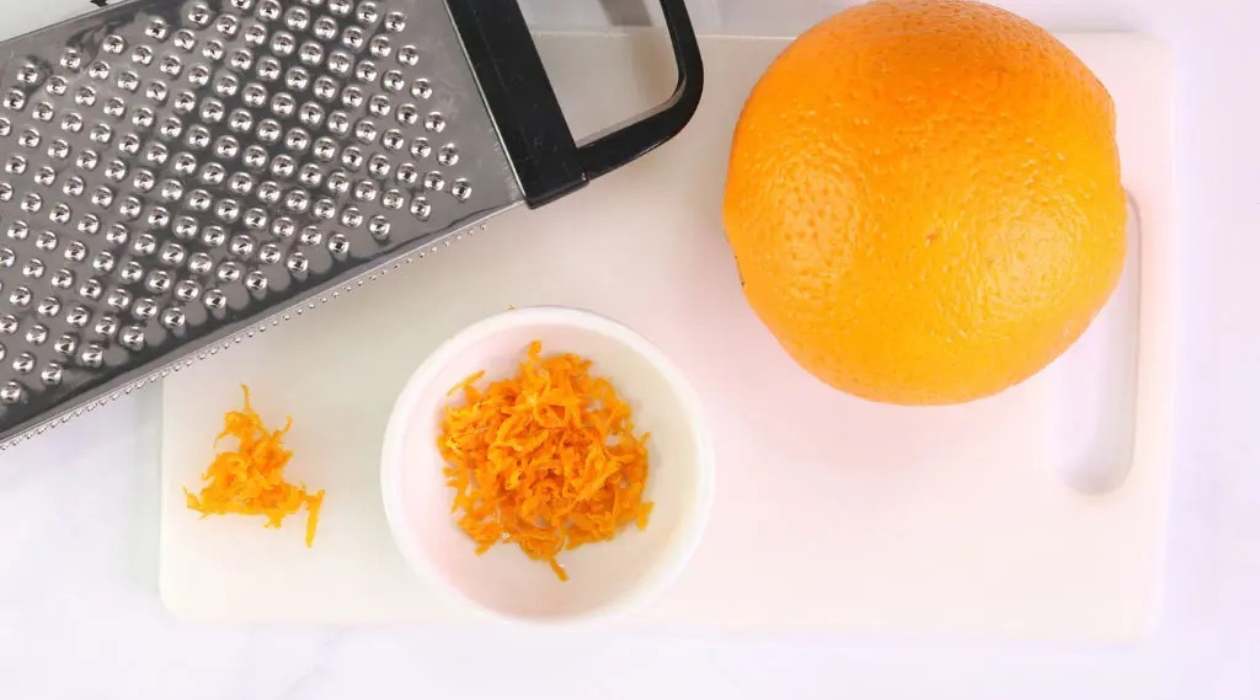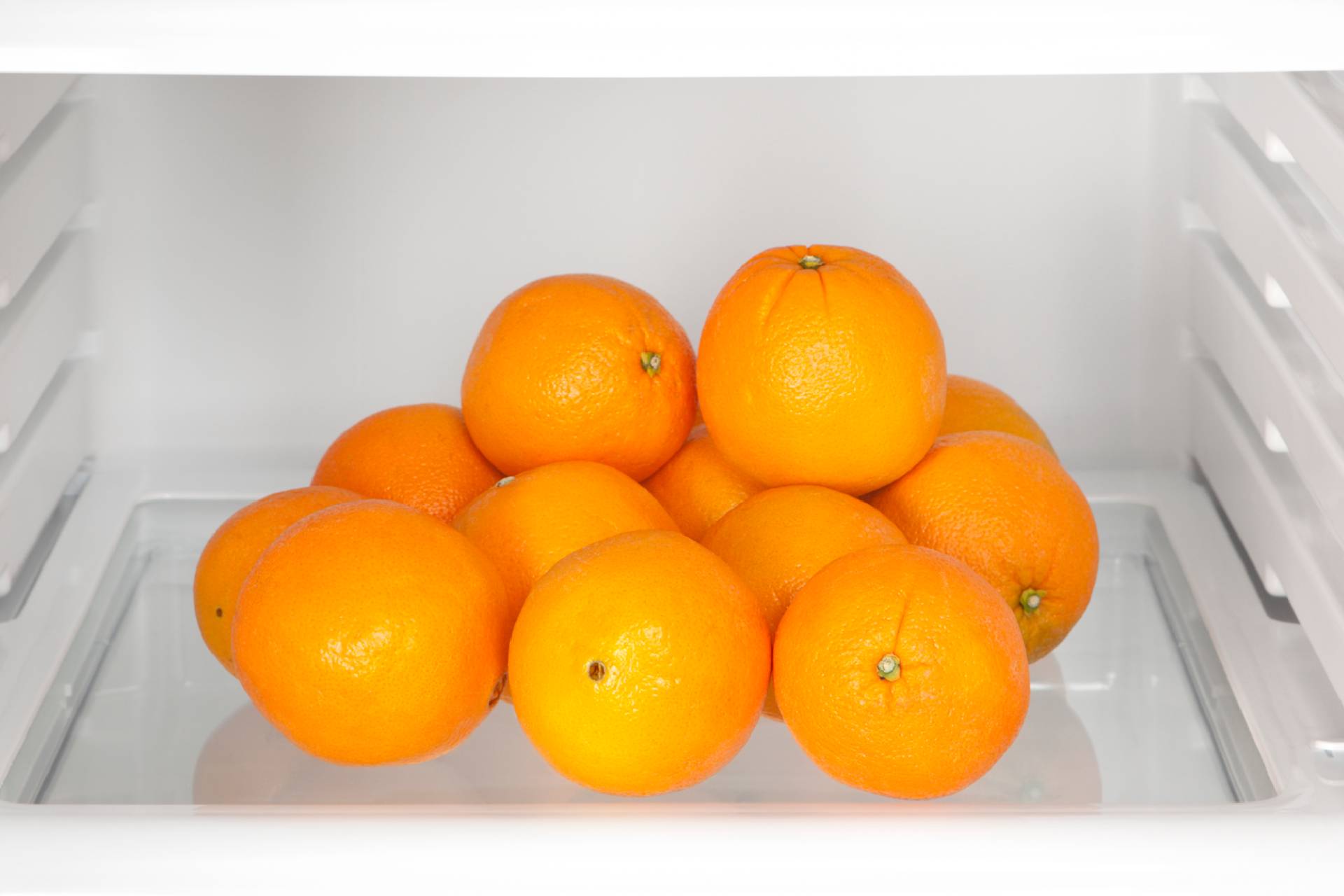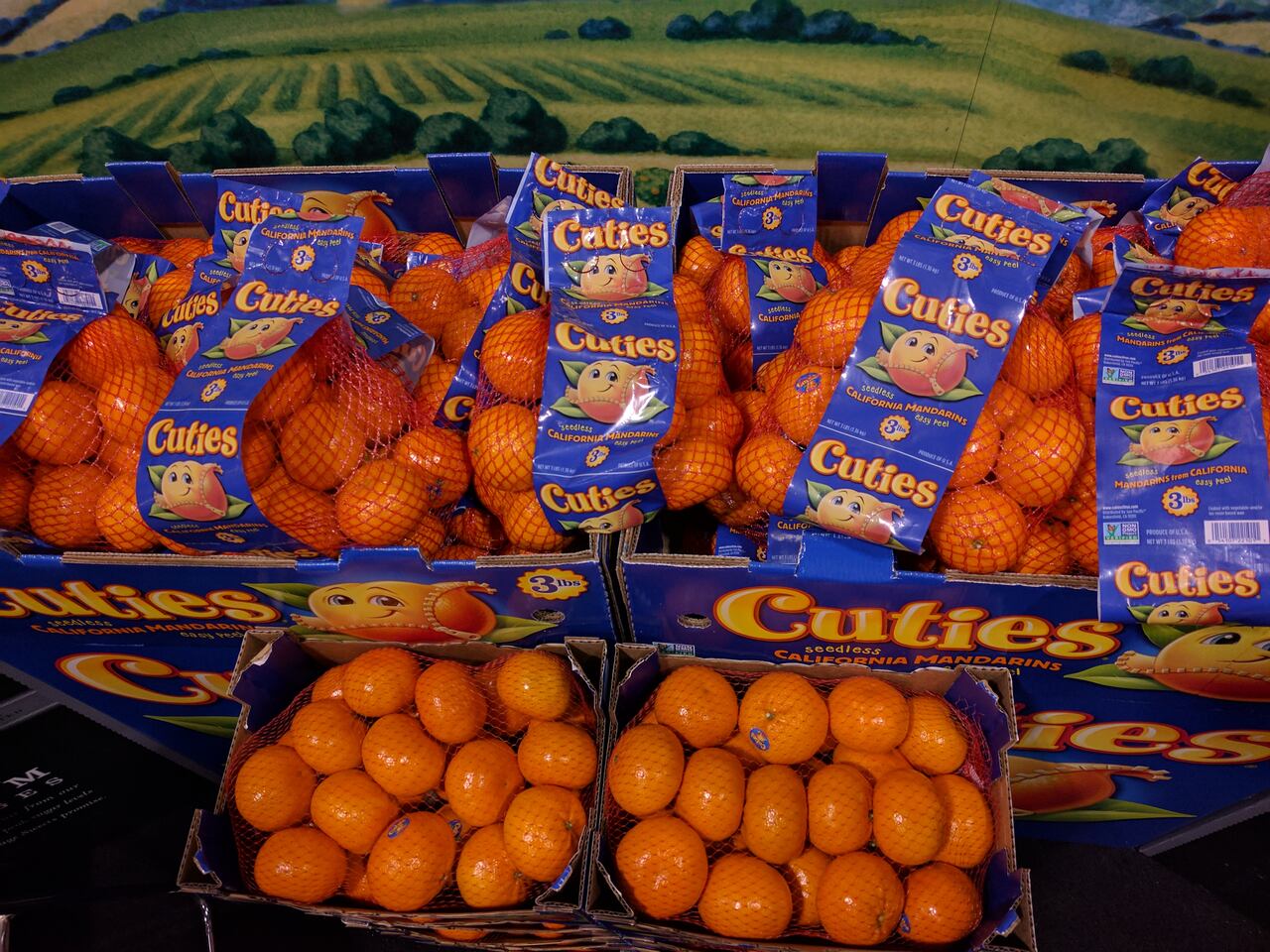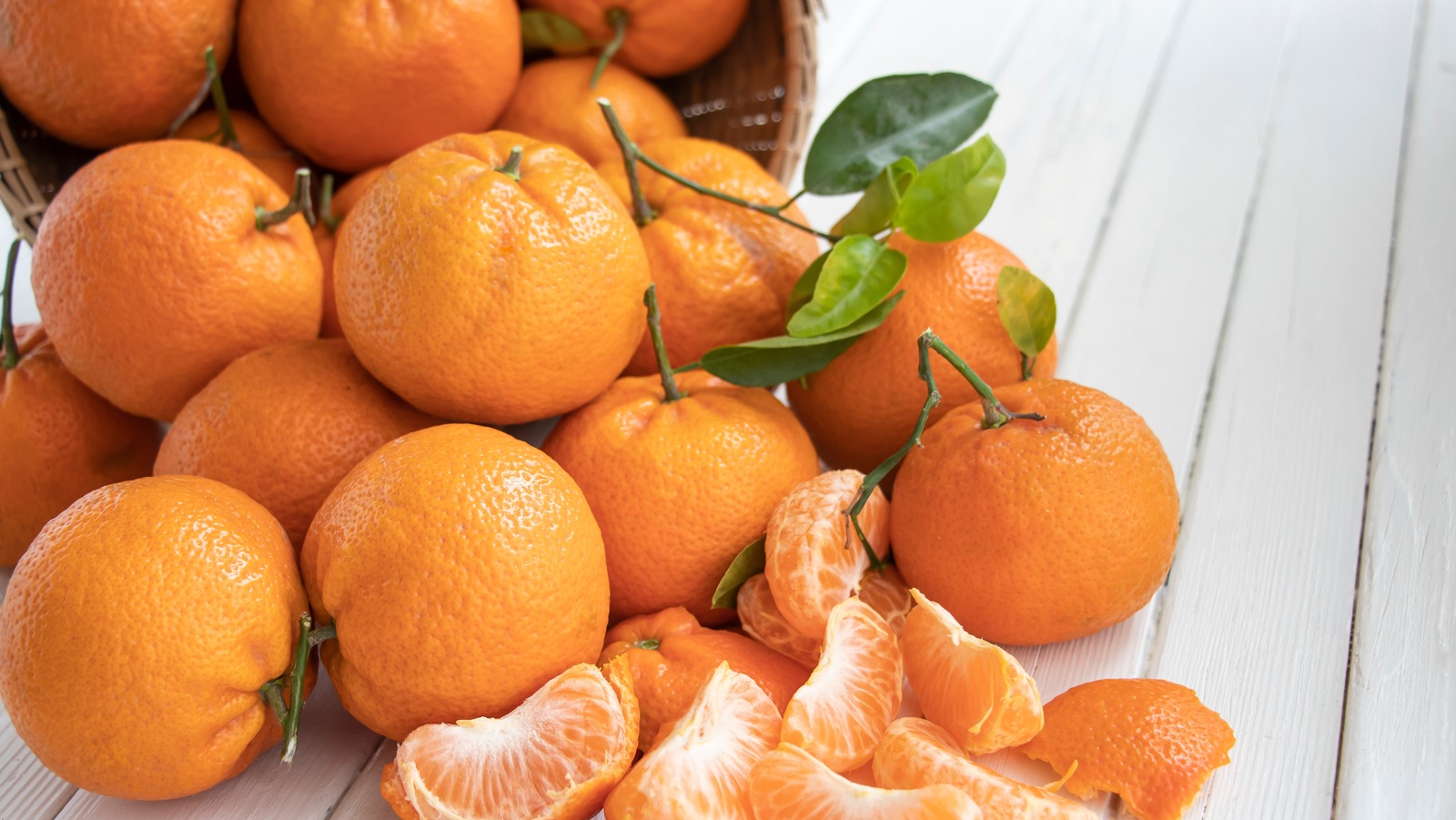

Articles
How To Store Cut Oranges
Modified: January 6, 2024
Learn the best way to store cut oranges to keep them fresh and juicy. Follow these simple tips and tricks in this informative article.
(Many of the links in this article redirect to a specific reviewed product. Your purchase of these products through affiliate links helps to generate commission for Storables.com, at no extra cost. Learn more)
Introduction:
Welcome to our guide on how to properly store cut oranges! Oranges are not only delicious and refreshing, but they are also packed with essential nutrients like vitamin C and fiber. Whether you have freshly cut oranges for snacking, juicing, or incorporating into recipes, it’s important to know the best practices for storing them to maintain their freshness and flavor.
In this article, we will dive into the importance of properly storing cut oranges and the factors to consider before storing them. We will provide you with a step-by-step guide on how to store cut oranges, along with some tips to help you maintain their freshness. Additionally, we will highlight some common mistakes to avoid and discuss the different storage options available for cut oranges. So, let’s get started!
Key Takeaways:
- Properly storing cut oranges is crucial for preserving their freshness, flavor, and nutrients. Consider factors like ripeness, cleanliness, and storage containers to maintain their quality.
- Avoid common mistakes like leaving cut oranges at room temperature and not sealing the container properly. Follow the step-by-step guide and tips to ensure your cut oranges stay fresh and delicious.
Read more: How To Store Oranges
Importance of Properly Storing Cut Oranges:
Properly storing cut oranges is crucial for maintaining their quality, taste, and nutritional value. Here’s why it’s essential:
- Preserves Freshness: When oranges are cut, their protective peel is removed, exposing the flesh to air and moisture. Without proper storage, the exposed fruit can quickly lose its freshness, become dry, and ultimately spoil.
- Maintains Flavor and Nutrients: Oranges contain volatile compounds that contribute to their vibrant aroma and flavor. Proper storage helps retain these volatile compounds, ensuring that your cut oranges taste their best. It also helps preserve the vitamin C content, which is susceptible to oxidation and can be lost if oranges are improperly stored.
- Reduces Waste: By storing cut oranges properly, you can extend their shelf life and reduce waste. This is especially beneficial if you have a surplus of oranges or if you’ve cut up more than you can consume in one sitting.
Now that we understand the importance of proper storage, let’s explore the factors to consider before storing cut oranges.
Factors to Consider Before Storing:
Before you store cut oranges, it’s important to consider a few factors that can affect their shelf life and quality. Here are the key factors to keep in mind:
- Ripeness: The ripeness of the oranges plays a significant role in determining how long they will stay fresh. It’s best to use oranges that are fully ripe but still firm for cutting. Overripe or mushy oranges may not last as long.
- Cleanliness: Ensure that the oranges are clean and free from any dirt or debris before cutting them. Washing the fruits before slicing will help remove any potential contaminants and contribute to their overall freshness.
- Storage Containers: Choosing the right storage container is crucial for maintaining the quality of cut oranges. Opt for containers that are airtight, food-safe, and preferably transparent, as they allow you to easily see the oranges without having to open the container frequently.
- Temperature: Oranges are best stored in a cool environment. Temperature extremes can negatively impact the fruit’s quality, so avoid exposing cut oranges to excessive heat or direct sunlight.
- Humidity: The ideal storage conditions for cut oranges include moderate humidity. A dry environment can cause the oranges to dehydrate and become shriveled, while high humidity can lead to mold growth. Aim for a humidity level of around 80-90%.
- Timing: Cut oranges should ideally be consumed within a few hours of being prepared for optimal freshness. However, if you need to store them for longer periods, it’s important to take the necessary steps to maintain their quality.
Now that you’re familiar with the important factors to consider, let’s move on to the step-by-step guide for storing cut oranges.
Step-by-Step Guide for Storing Cut Oranges:
Follow these simple steps to properly store cut oranges and keep them fresh for longer:
- Cut and Prepare: Start by washing the oranges thoroughly. Next, use a sharp knife to cut off the top and bottom of the fruit. Then, carefully slice off the peel, removing as much of the white pith as possible. Finally, slice the oranges into your desired shape, such as wedges or rounds.
- Dry the Cut Oranges: After cutting the oranges, gently pat them dry with a paper towel. Removing excess moisture will help prevent them from becoming soggy or moldy.
- Choose the Right Container: Select a clean, airtight container that is suitable for storing food. Glass or plastic containers with lids work well. Alternatively, you can use resealable plastic bags. Ensure that the container is large enough to hold the cut oranges without overcrowding.
- Line the Container: If desired, you can line the bottom of the container with a layer of paper towels or a clean kitchen towel. This will help absorb any excess moisture and further protect the oranges from becoming soaked.
- Place the Cut Oranges in the Container: Arrange the cut oranges in a single layer inside the container. Be sure to leave some space between the pieces to allow for air circulation. If you have multiple layers of oranges, separate them with a layer of parchment paper or plastic wrap to prevent sticking.
- Seal the Container: Once the cut oranges are in the container, seal it tightly to create a proper airtight environment. This will help prevent air exposure and slow down the oxidation process.
- Store in the Refrigerator: Place the sealed container of cut oranges in the refrigerator. The cool temperature will help prolong their freshness and slow down any spoilage.
- Consume within a Few Days: While properly stored cut oranges can last for a few days in the refrigerator, it’s best to consume them within 3-4 days for the best flavor and quality.
By following these steps, you can ensure that your cut oranges stay fresh and ready to enjoy whenever you crave a juicy and refreshing snack.
Tips for Maintaining Freshness:
Here are some additional tips to help you maintain the freshness of cut oranges:
- Keep the Oranges Whole as Long as Possible: To maximize freshness, consider keeping the oranges whole until you’re ready to consume them. Cutting them exposes the fruit to air and accelerates the oxidation process.
- Store in the Coldest Part of the Refrigerator: Place the container of cut oranges in the coldest section of your refrigerator, such as the bottom shelf or the crisper drawer. This will help maintain their freshness and prevent them from spoiling quickly.
- Avoid Stacking or Overcrowding: It’s important not to stack or overcrowd the cut oranges in the storage container. Proper air circulation is necessary to prevent moisture buildup and maintain freshness.
- Avoid Mixing with Strong-Smelling Foods: Cut oranges can absorb odors from other foods, so it’s best to avoid storing them alongside strong-smelling items like onions or garlic. This will help preserve their natural aroma and flavor.
- Check for Spoilage: Regularly check the cut oranges for any signs of spoilage, such as mold, unusual discoloration, or a foul smell. If you notice any of these signs, discard the affected pieces immediately.
- Consider Freezing: If you have a surplus of cut oranges and don’t think you’ll be able to consume them within a few days, consider freezing them. Place the cut oranges in a freezer-safe container or resealable bags, and store them in the freezer for up to 3 months.
- Protect from Direct Sunlight: Avoid exposing the container of cut oranges to direct sunlight, as it can cause the fruit to deteriorate faster. Keep them in a shaded area of the refrigerator to maintain their quality.
- Use Freshly Squeezed Orange Juice: If you’ve stored cut oranges for juicing purposes, it’s best to use the fresh juice within a day or two for maximum flavor and nutrition.
By following these tips, you can ensure that your cut oranges stay fresh, flavorful, and ready to enjoy for as long as possible.
Store cut oranges in an airtight container in the refrigerator to keep them fresh. Make sure to remove any seeds and store them with the peel side down to prevent them from drying out.
Read more: How To Store Peeled Oranges
Common Mistakes to Avoid:
When it comes to storing cut oranges, there are some common mistakes that should be avoided to maintain their freshness and quality. Here are a few to keep in mind:
- Leaving the Cut Oranges at Room Temperature: Oranges should be stored in the refrigerator to keep them fresh. Leaving cut oranges at room temperature can lead to rapid spoilage and the growth of harmful bacteria.
- Using Non-Food Safe Containers: It’s important to store cut oranges in food-safe containers that won’t leach any harmful chemicals into the fruit. Avoid using containers made of materials like cardboard, which can absorb moisture and impact the quality of the oranges.
- Omitting the Drying Step: Failure to dry the cut oranges before storing can result in excess moisture, leading to a soggy texture and increased risk of spoilage. Make sure to pat the cut oranges dry before placing them in the storage container.
- Not Sealing the Container Properly: Airtight sealing is essential to maintain the freshness of cut oranges. Failing to seal the container tightly can allow air to enter, causing the oranges to dry out or become susceptible to bacterial growth.
- Storing Overripe or Damaged Oranges: It’s best to use fresh, firm, and undamaged oranges for cutting. Overripe or damaged oranges are more prone to spoilage, and storing them will only hasten the deterioration process.
- Not Checking for Spoilage Regularly: Neglecting to check on the stored cut oranges regularly can result in consuming spoiled fruit unknowingly. Take a quick look and smell test to identify any signs of mold, discoloration, or off-putting odors.
- Storing for Too Long: Cut oranges are best consumed within a few days of being prepared. Storing them for an extended period can lead to a decline in texture, flavor, and nutritional value. It’s advisable to cut and store only the amount you plan to consume within a reasonable timeframe.
By avoiding these common mistakes, you can ensure that your cut oranges stay fresh, delicious, and safe to consume.
Different Storage Options for Cut Oranges:
When it comes to storing cut oranges, there are several options available to choose from. Here are the different storage methods you can consider:
- Airtight Containers: Using airtight containers, such as glass or plastic containers with secure lids, is a popular and effective option for storing cut oranges. These containers create a sealed environment that helps maintain the freshness of the fruit.
- Resealable Plastic Bags: If you’re looking for a more convenient and space-saving option, resealable plastic bags can be a good choice. Place the cut oranges in the bag, remove any excess air, and seal it tightly. This method is especially useful for storing smaller portions.
- Wrap in Plastic Wrap: Another alternative is to wrap the cut oranges tightly in plastic wrap. This helps create a barrier against air and moisture, preserving the freshness of the fruit.
- Food Storage Wrap: Food storage wrap, like cling wrap or beeswax wraps, can also be used to wrap and cover cut oranges. These wraps provide a protective layer and prevent the fruit from drying out.
- Parchment Paper: Placing a layer of parchment paper on the bottom of the container can help absorb excess moisture and protect the cut oranges from becoming soaked.
- Orange Segments: Rather than storing the whole orange, you can separate the segments and store them individually. Place the segments in a container or resealable bag, removing as much air as possible before sealing.
- Freezing: If you have a large quantity of cut oranges or want to prolong their shelf life, freezing is a viable option. Place the cut oranges in a freezer-safe bag or container, remove any excess air, and store them in the freezer. Be sure to label and date the package for easy identification.
Each of these storage options provides its own benefits, so choose the method that best suits your needs and preferences. Regardless of the storage option you choose, make sure to follow the proper steps and consider the factors we discussed earlier.
Frequently Asked Questions (FAQs):
Here are some frequently asked questions about storing cut oranges:
- Can I leave cut oranges at room temperature?
- How long can I store cut oranges in the refrigerator?
- Can I freeze cut oranges?
- Can I store cut oranges in water?
- Are there any signs that cut oranges have gone bad?
- Should I wash the cut oranges before storing them?
- Can I store cut oranges with other fruits?
No, it’s best to store cut oranges in the refrigerator to maintain their freshness and prevent spoilage.
Cut oranges can typically be stored in the refrigerator for 3-4 days. It’s advisable to consume them within this time frame for the best flavor and quality.
Yes, you can freeze cut oranges to prolong their shelf life. Make sure to store them in a freezer-safe container or bag, and use them within 3 months for optimal flavor.
It’s not recommended to store cut oranges in water, as it can cause the fruit to become waterlogged and affect its taste and texture.
Some signs that cut oranges have gone bad include mold growth, unusual discoloration, a strong off-putting odor, or a slimy texture. If you notice any of these signs, it’s best to discard the oranges.
It’s advisable to wash the whole oranges before cutting them to remove any dirt or debris. However, it’s not necessary to wash the cut oranges again before storing, as excess moisture can contribute to spoilage.
It’s generally safe to store cut oranges with other fruits, but be aware that some fruits release ethylene gas, which can speed up the ripening process and affect the quality of the oranges.
If you have any other questions about storing cut oranges, feel free to consult with your local food safety guidelines or a knowledgeable source.
Conclusion:
Properly storing cut oranges is essential to maintain their freshness, flavor, and nutritional value. By following the steps and tips outlined in this article, you can ensure that your cut oranges stay delicious and enjoyable for longer periods.
Remember to consider factors such as ripeness, cleanliness, storage containers, temperature, humidity, and timing before storing your cut oranges. By choosing the right storage option, such as airtight containers or resealable bags, you can prevent the fruit from drying out and spoiling quickly.
Avoid common mistakes like leaving cut oranges at room temperature, using non-food safe containers, omitting the drying step, and storing overripe or damaged oranges. Regularly check for signs of spoilage to ensure you’re consuming fresh and safe fruit.
Whether you’re storing cut oranges for snacking, juicing, or adding to recipes, proper storage techniques will help you make the most of this delicious and nutritious fruit. So, follow the guidelines, freeze if necessary, and enjoy the refreshing taste of cut oranges whenever you desire.
By taking the time to store your cut oranges properly, you can savor their natural sweetness, enjoy their health benefits, and reduce food waste. So go ahead and take the necessary steps to keep your cut oranges fresh and delicious for as long as possible!
Frequently Asked Questions about How To Store Cut Oranges
Was this page helpful?
At Storables.com, we guarantee accurate and reliable information. Our content, validated by Expert Board Contributors, is crafted following stringent Editorial Policies. We're committed to providing you with well-researched, expert-backed insights for all your informational needs.















0 thoughts on “How To Store Cut Oranges”